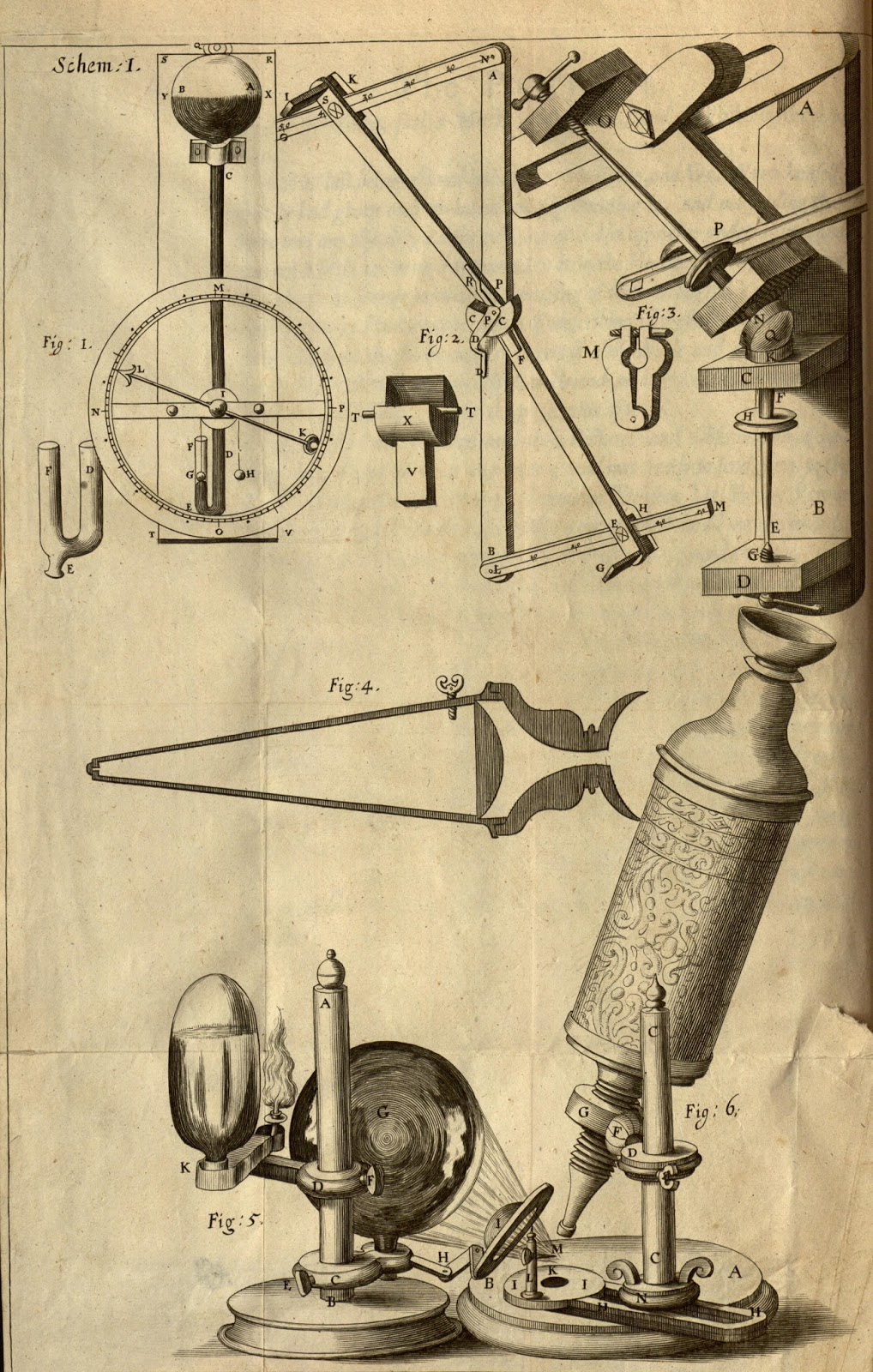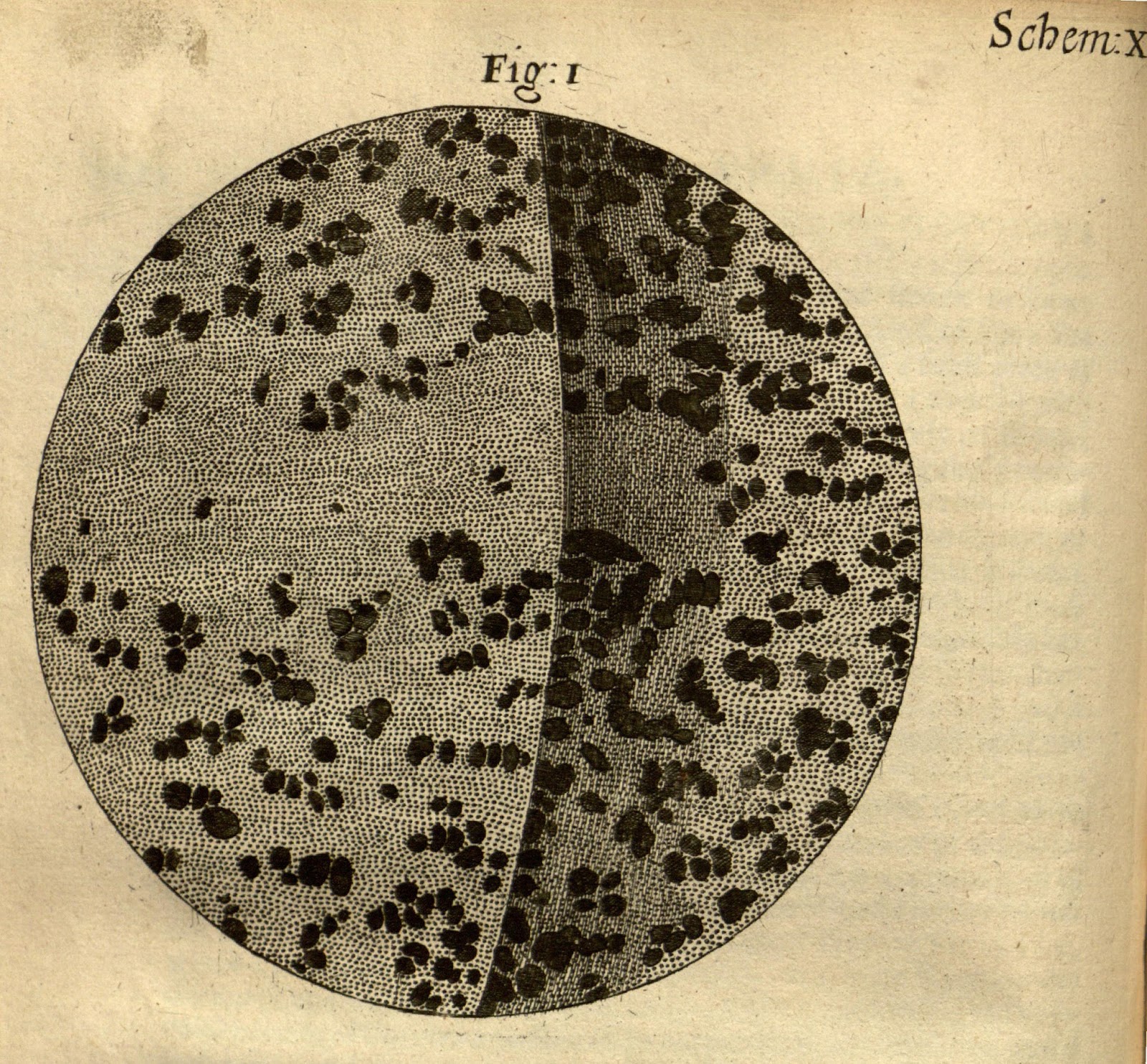Fossils Under the Microscope: Hooke and Micrographia
By the seventeenth century, it was still widely believed that species could not become extinct, and there were still many hypotheses about the origin of fossils. One widely-held belief, extending back to Aristotle’s time, was that fossils were formed by the Earth itself, and that some “extraordinary Plastick virtue” could create stones that resembled, but were not, living organisms.
But also during the seventeenth century, some critical advances in the world of science were having an impact on fossil research.
Robert Hooke was born at Freshwater, on the Isle of Wight, in 1635. Though of humble origins, he eventually studied at Oxford and impressed many of England’s leading scientists with his ability to design experiments and build equipment. In 1662, Hooke was named Curator of Experiments of the newly formed Royal Society of London, where he demonstrated new equipment and experiments during the Society’s weekly meetings.
 |
| Robert Hooke’s microscope. Micrographia, 1665. http://biodiversitylibrary.org/page/786364. Digitized by: Missouri Botanical Garden. |
One of his inventions was a novel compound microscope and illumination system, one of the best microscopes of the time. In 1665, Hooke published Micrographia, his masterpiece detailing his microscopic observations. It is the first book to illustrate plants and animals as seen through the microscope, and the stunning illustrations capture minute details such as the intricacies of a flea or the cells in cork tissue. In fact, Hooke coined the term “cells,” as the structures he saw in his microscope reminded him of the cells of a monastery.
Hooke also examined fossils with his microscope, thus becoming the first recorded person to do so. Through his observations, he noticed striking similarities between petrified and living wood and fossil shells and living mollusk shells. Comparing petrified wood to a piece of rotten oak wood, Hooke realized that wood could be turned to stone when water deposited minerals throughout the wood. Similarly, his observations on shell-like fossils led him to conclude that shells could also be turned into fossils when they were “fill’d with some kind of Mud or Clay, or petrifying Water, or some other substance.”
 |
| A section of petrified wood. Micrographia, 1665. http://biodiversitylibrary.org/page/786478. Digitized by: Missouri Botanical Garden. |
Throughout his life, Hooke continued to study fossils and compare them to living organisms. Recognizing that many fossils did not have living equivalents, he concluded that some represented species that no longer exist. If this was true, he deduced, it was likely that there are species alive today that did not exist in past ages.
Thus, nearly 200 years before Darwin, Hooke’s observations of fossils led him to assert that they are not only the remains of past-living organisms, but that they also document the history and changes of life on Earth.
Fossil Stories
- Tweets and Facebook Posts
- Blog Posts highlighting milestones and key publications in the history of fossil research
- A Flickr Collection with hundreds of historic fossil illustrations
- A Pinterest Collection featuring a selection of our favorite fossil illustrations
- A BHL Collection containing seminal publications in the history of paleontology
- A series of live webcasts at BHL partner institutions
- A citizen science challenge in collaboration with The Field Book Project, the Smithsonian Transcription Center, and Smithsonian Institution Archives
Reference
UC Berkeley: Robert Hooke





Georges Cuvier presented good evidence from his study of fossil bones that many species become extinct long ago.
He also presented good evidence from is study of fossil bones that some species first appeared only after other species had become extinct.
And he rejected the possibility that more recent species arose by evolution from older species, leaving only the possibility that these newer species arose by some sort of creation.
What evidence, if any, did Cuvier have for such creation?
.